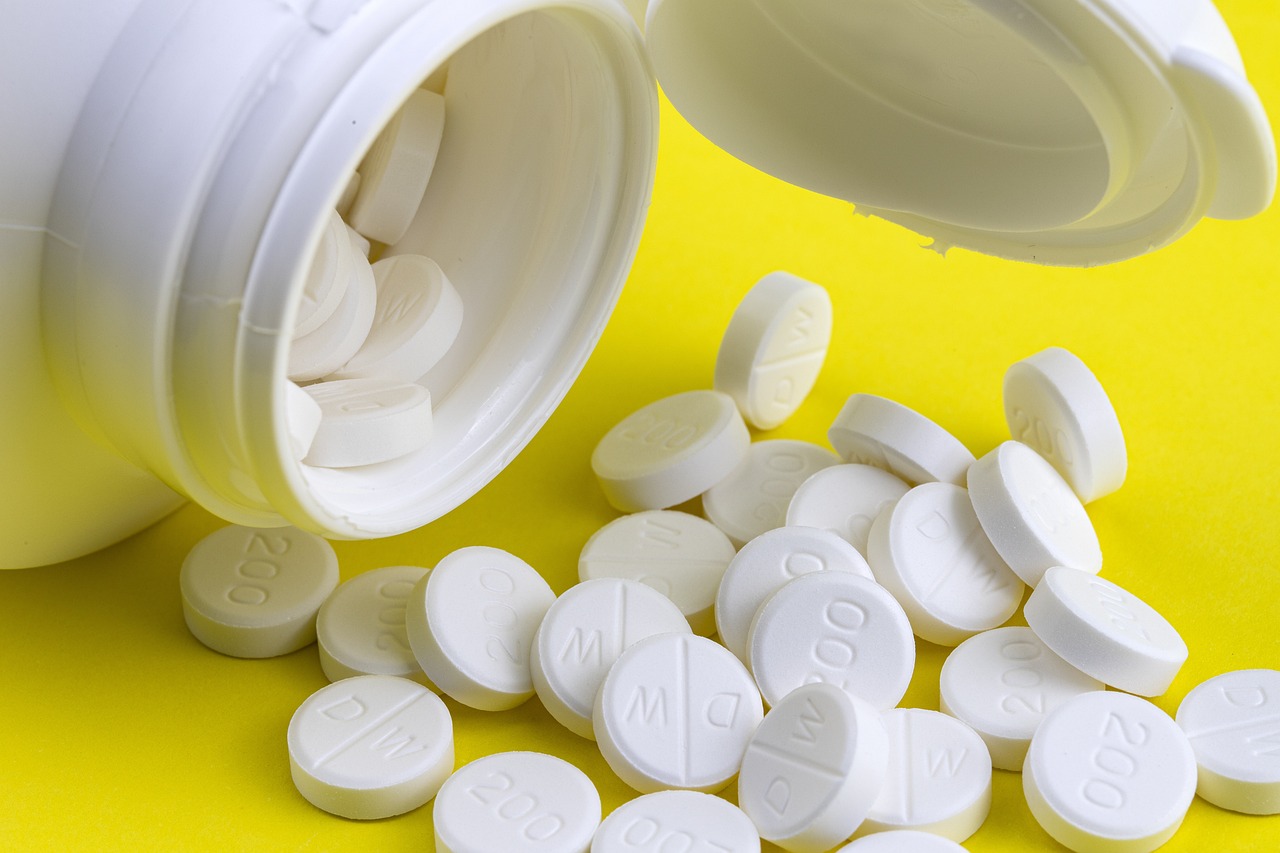Croup is a common kids' sickness, affecting those under six the most. It's often not serious, but if it gets worse or doesn't respond to treatment, hospital care might be needed. This disease often stems from viruses.
These viral types can lead to conditions like tracheitis or laryngitis. Bacteria can also cause croup, resulting in things like laryngeal diphtheria. Viral versions are less harmful than bacterial ones, and the signs tend to fade faster. Sorting viral from bacterial croup isn't cut and dry – it needs doctor's expertise.
Usually, croup symptoms such as a barking cough, hoarseness, and breathlessness appear suddenly. Viral croup symptoms typically resolve within 48 hours but can last several days. A history of subglottic laryngitis does not leave lasting immunity, so re-infection is possible. Most children with subglottic laryngitis present with mild symptoms of the disease and can be treated at home. According to current guidelines, additional treatment may be used for children with moderate to severe subglottic laryngitis.

Croup or subglottic laryngitis affects the upper part of the respiratory system![]() . The larynx is a small, symmetrical section of the upper respiratory tract, a small cartilaginous structure that connects the pharynx to the trachea. The larynx is primarily responsible for producing the voice, changing its timbre and intensity. It also protects the airway by reflexively closing the entrance to the larynx when there is a risk of foreign objects entering it.
. The larynx is a small, symmetrical section of the upper respiratory tract, a small cartilaginous structure that connects the pharynx to the trachea. The larynx is primarily responsible for producing the voice, changing its timbre and intensity. It also protects the airway by reflexively closing the entrance to the larynx when there is a risk of foreign objects entering it.
Viral damage to the mucous membrane in the subglottic region of the larynx results in swelling and narrowing of the airways. Inspiratory dyspnoea occurs. Thus, like most viral infections of the upper respiratory tract, infection occurs via the droplet route.

The causes of laryngitis are usually viral![]() in origin. The following types of virus are responsible for most cases:
in origin. The following types of virus are responsible for most cases:
Parainfluenza virus – HPIV is known to cause upper respiratory tract infections. The symptoms of infection resemble those of a cold or flu, so the virus is often not identified. Paragrpa, or pseudo-influenza, is a disease whose symptoms often resemble cold ones. However, young children, seniors, and those with weakened immune systems can develop symptoms of respiratory illnesses such as pneumonia or viral croup, which can be life-threatening. It is caused by a virus from the family Paramyxoviridae and the genus Paramyxovirus.
Adenovirus – Adenoviruses are part of the DNA virus clan. These microscopic villains cause many viral attacks in kids and grown-ups. They can mess with our breathing, digestion, and even eyes. Hide all you want; these invisible threats are everywhere. Different groups of adenoviruses cause varying levels of trouble, from minor discomfort to severe illness. For the very young or those with weak immune systems, these micro-terrorists can be especially harmful.
Influenza viruses A and B – Influenza is an acute seasonal infection caused mainly by type A and B viruses found worldwide. Unlike influenza A viruses, influenza B occurs only in humans and has less ability to mutate. Influenza B can cause a less severe reaction than influenza A but can sometimes be very harmful. Influenza A and B viruses can cause croup in more severe cases. In most cases, influenza has a mild course, while croup develops rapidly and intensely.
Paramyxovirus measles – Measles is a contagious disease caused by the paramyxovirus. The disease is characterized by a thick-spotted rash on the skin, symptoms of respiratory infection, conjunctivitis, and fever. Croup is included among the possible complications that occur after measles. Measles, like many different infectious diseases, can be effectively prevented by vaccination.
Human metapneumovirus (hMPV) – Causes upper and lower respiratory tract infections, mainly in infants and children. Although some hMPV infections are asymptomatic, in most cases, there is a need for hospitalization, especially for mixed infections in young children. Human metapneumovirus can cause inflammation of the mucosa of the subglottic region of the larynx, known as croup. Human metapneumovirus is an RNA virus belonging to the Paramyxoviridae family, parainfluenza viruses, and RSV.
Respiratory syncytial virus (RSV) – The Respiratory syncytial virus, or RSV, is something many of us deal with. It's a common germ that often causes lung infections. While most people will have mild symptoms, some patients might get sick from it. Why? RSV spreads easily and can cause outbreaks at places like daycares, schools, or hospitals. RSV can lead to a condition called viral croup. This is when your voice box, and windpipe get inflamed.

Bacteria, though less prevalent, can lead to croup too. Primarily, most infections are viral and might later turn into bacterial![]() . Severe bacterial croup is identified as sudden diphtheria pharyngitis and laryngitis. These bacteria can cause croup:
. Severe bacterial croup is identified as sudden diphtheria pharyngitis and laryngitis. These bacteria can cause croup:
Staphylococcus aureus bacteria – Some bacteria from the Staphylococcus group are normally found in humans. But, trouble starts when an infection from these bacteria happens. It can get quite serious. Plus, these bacteria resist antibiotics, making treatment tough. In our bodies, harmful types of Staphylococcus can hide out for a long time without causing any problems. At that time, staphylococci do not produce any symptoms. Their activation leads to the development of many serious diseases. Staphylococcus aureus bacteria can cause bacterial croup infection.
Pneumococci – These pathogens are gram-positive bacteria that are most commonly located in the throat or nose. It is a prevalent bacteria. The symptoms of pneumococcal infection are determined by the type of infection they cause. Pneumococcal infection most commonly affects children. A significant increase in infections caused by Streptococcus pneumoniae is observed in autumn and winter. This is also when viral infections in the upper respiratory tract increase, which increases the predisposition to secondary bacterial infections.
Haemophilus influenzae type b – Hib is a bacterium that causes severe infections, especially in young children and people with immunodeficiency. Haemophilus influenzae type b infections are seen worldwide. Sometimes, Haemophilus influenzae is also responsible for developing laryngeal cough, a symptom of croup in children. Haemophilus influenzae type B can cause severe pneumonia, meningitis, septicemia, and other invasive diseases, including croup.

Laryngitis![]() , tracheitis
, tracheitis![]() , and bronchitis
, and bronchitis![]() are part of the croup family. It starts like a common cold, yet quickly changes to acute tracheobronchitis emerge. Croup originates from white blood cells infiltration, causing larynx, trachea, and major bronchi swelling. This swelling blocks the airways partially. When critical, it can lead to hard breathing work.
are part of the croup family. It starts like a common cold, yet quickly changes to acute tracheobronchitis emerge. Croup originates from white blood cells infiltration, causing larynx, trachea, and major bronchi swelling. This swelling blocks the airways partially. When critical, it can lead to hard breathing work.
Croup is marked by trouble breathing, usually more at night or early morning. Symptoms of viral croup often fade within 48 hours; they may linger for a few days. Symptoms of croup can range in severity from very mild, which does not impede daily functioning, to very severe, which may even require hospitalization and are life-threatening. Symptoms of croup include:

Stridor – Laryngeal wheezing is a symptom that occurs when there is severe swelling of the larynx. It manifests as a characteristic wheezing, harsh sound accompanying breathing, and swirling airflow through the swollen larynx due to severe airway narrowing. Physical activity worsens the stridor, but the symptom can also be heard at rest.
Seal-like cough – Imagine a seal or dog bark; that's what this cough sounds like. It's squeaky, fast, and choppy. You may even struggle to breathe. The squeak keeps going; it doesn't stop. It's a dry cough. It comes when the voice box swells and gets sore, often leaving you winded and wheezy.
Fever – It is a different, characteristic symptom of croup. An elevated body temperature or sub-febrile state is present in almost every case of croup. However, it is essential to note that the absence of fever should not reduce the suspicion of croup. A fever is a symptom indicative of inflammation caused by bacteria or viruses.
Shortness of breath – When croup strikes kids, breath shortage often happens. It worries parents. Kids struggle to breathe. They also show signs like pulling in of the skin between ribs, fast breaths, paleness, and unease. Sometimes, trouble breathing could lead to breathing failure, but that's rare. It commonly blocks kids' airways. Changes in body structure and function add to this.
Hoarseness – It is another characteristic symptom of croup. Hoarseness is a rough and dull voice that occurs when, when speaking, the so-called vocal cords, or vocal folds, vibrate abnormally and cannot make contact, or there are abnormalities in their elasticity due to various disease processes.
Accelerated heart rate – Respiratory and heart rates may also be increased in cases of croup, with an average respiratory rate of 20 to 30 breaths per minute![]() . As the disease progresses, upper airway obstruction, laryngeal dyspnoea, and increased respiratory rate with prolonged inspiratory phase may occur.
. As the disease progresses, upper airway obstruction, laryngeal dyspnoea, and increased respiratory rate with prolonged inspiratory phase may occur.
Cyanosis – Croup rarely causes cyanosis. Cyanosis is a pathological symptom involving a change in the color of the skin to a bluish color. It is associated with an abnormal amount of oxygenated hemoglobin, a pathological form of hemoglobin in the blood, or an impaired blood supply. Symptoms of cyanosis often occur with an attack of dyspnoea. In croup, cyanosis can occur in severe cases. In children, there is cyanosis around the mouth with increased crying.

Identifying subglottic laryngitis in kids comes down to classic signs like coughing, stridor, and problems breathing. Croup symptoms are so noticeable, often, your doctor won't need extra exams or tests to know it's croup. But, it's important to tell viral croup symptoms apart from other diseases:
Epiglottitis – Epiglottitis is a rare bacterial disease involving the upper part of the larynx. Typical symptoms include laryngeal wheezing and impaired respiratory function, characteristic of croup. In addition to it, there is also sore throat and salivation following swallowing disorders.
Angioedema – Angioedema is the appearance of swelling of the skin and underlying tissues due to abnormal, excessive vascular permeability caused by exposure to solid substances. The course involves difficulty breathing and shortness of breath, which can be confused with croup. The appearance of visible swelling on the body and face allows the disease to be correctly diagnosed.
Peri-tonsillar abscess – A peri-tonsillar abscess is like a pocket of pus that gathers in the area between the tonsil sac and the muscle cover of the side throat wall. It's often the main problem after having strep throat or other bacteria. This sickness can make it feel like you're struggling to breathe through your throat, which can be puzzling. Plus, there's usually a high fever and changes in how your voice sounds. But, the key sign is intense throat pain. This makes it easier to identify this throat condition.
Allergic reaction – You might confuse an allergy![]() with croup. The signs? Wheezing, chest tightness, gasping for breath, coughing. But are these from allergens? Consider this. Also, be aware of allergic rhinitis, rashes, or swelling. These also signal allergies.
with croup. The signs? Wheezing, chest tightness, gasping for breath, coughing. But are these from allergens? Consider this. Also, be aware of allergic rhinitis, rashes, or swelling. These also signal allergies.
Foreign body in the respiratory tract or esophagus – Usually, when something foreign gets into the bronchial tree, it causes coughing, repeated lung infections, and sputum. A squeaky breath from an airway getting smaller due to this unwanted item causes wheezing. This doesn't necessarily mean one has croup. Above all, remember, having a foreign body lodged is a serious threat to one's life. It should be ruled out first in any diagnosis.

Treatment depends on the level of severity of the disease. For this goal, the Westley Scale![]() is used. Treatment of subglottic laryngitis in the case of a mild course can be carried out with home methods. Only when the disease takes a severe type can medication be necessary. Moderate or severe cases require up to four hours of observation, and if symptoms do not improve, hospital admission is then needed. Treatment options for croup include:
is used. Treatment of subglottic laryngitis in the case of a mild course can be carried out with home methods. Only when the disease takes a severe type can medication be necessary. Moderate or severe cases require up to four hours of observation, and if symptoms do not improve, hospital admission is then needed. Treatment options for croup include:
Pharmacotherapy – Depending on the severity of the case of croup, patients are given d***********e![]() and nebulized epinephrine
and nebulized epinephrine![]() . Corticosteroids, such as d***********e, result in a more rapid resolution of symptoms. Nebulization involves administering the liquid drug in the spray type directly into the respiratory system. If a child has difficulty delivering medication, medication can be given orally or intramuscularly. The use of cough medicines is discouraged.
. Corticosteroids, such as d***********e, result in a more rapid resolution of symptoms. Nebulization involves administering the liquid drug in the spray type directly into the respiratory system. If a child has difficulty delivering medication, medication can be given orally or intramuscularly. The use of cough medicines is discouraged.
Oxygen therapy – If a patient's oxygen levels are low, they'll need extra oxygen. ‘Blowing' it in works well and makes them less upset than a mask or nose tube![]() . A tiny number of kids will need a breathing tube for help. When picking the tube size, remember their airway might be smaller because of swelling. Picking a tube half of the usual size may be best.
. A tiny number of kids will need a breathing tube for help. When picking the tube size, remember their airway might be smaller because of swelling. Picking a tube half of the usual size may be best.
Inhalations – Breathing in hot steam![]() or damp air can be used as a home treatment for croup. However, there is no scientific confirmation of the effectiveness of this method. Treatments for throat inflammation involve hot water steamed with essential oils like pine, eucalyptus, or bergamot. They're then breathed in. If the smells are too strong, use fresh sage or chamomile instead of oils. This treatment helps decrease the swelling of air-passages, improving our ability to breathe.
or damp air can be used as a home treatment for croup. However, there is no scientific confirmation of the effectiveness of this method. Treatments for throat inflammation involve hot water steamed with essential oils like pine, eucalyptus, or bergamot. They're then breathed in. If the smells are too strong, use fresh sage or chamomile instead of oils. This treatment helps decrease the swelling of air-passages, improving our ability to breathe.
Antibiotic therapy – Croup commonly happens because of a virus. We only use antibiotics if we think bacteria might be involved too. If there's a bacterial infection on top of it, doctors often suggest v********n![]() and c********e
and c********e![]() . If it's especially bad and linked with the flu (either type A or B), they might also use special anti-viral medicines called neuraminidase inhibitors.
. If it's especially bad and linked with the flu (either type A or B), they might also use special anti-viral medicines called neuraminidase inhibitors.

Though adult croup often heals at home, kids need more care. They don't handle the illness as easily. Viral croup complications are unusual; however, bacterial infections cause more trouble. Croup symptoms usually vanish, and they do so pretty fast. A few patients need hospital stays. Infrequent complications can be bacterial tracheitis![]() , pneumonia
, pneumonia![]() , pulmonary edema
, pulmonary edema![]() , and, in rare cases, death.
, and, in rare cases, death.
Croup is a sharp sickness caused by viruses or bacteria. It's more common in kids because their immune systems are still growing. The first signs of croup often look like they're related to a bad cold or flu. The seriousness of croup can change. Sometimes, it’s not too bad and doesn’t get in the way of everyday life. Other times, it can be so bad that someone needs to go to the hospital. It could even be dangerous.
Croup usually shows up with a deep, rough cough, noisy breathing, a rough voice, and shortness of breath. These signs often come on fast, usually happening at night or in the morning. Croup is so unique that doctors can tell if it's croup without needing extra tests. They can tell by the signs a person has. Medicines can step in when things scale up. Interestingly, most kid cases are gentle, but there could be symptoms requiring hospital care. Weirdly, croup signs often disappear on their own, usually speedily.